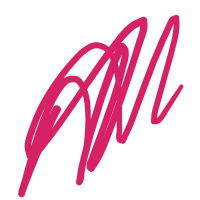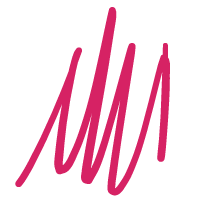In the world of search engine optimization (SEO), backlinks play a crucial role in improving your website’s authority and rankings on Google and other search engines. Backlinks indicate to search engines that your content holds value and relevance. While there are many platforms to build backlinks, one often overlooked but highly effective platform is Pinterest. In this guide, we’ll explore how you can use Pinterest as a backlink creator to drive traffic, boost your SEO, and improve your website’s visibility.
What is a Pinterest Backlink Creator?
Using Pinterest as a tool to create backlinks for your website is known as a Pinterest backlink creator. Pinterest is not just a social media platform; it’s a visual search engine with millions of users searching for ideas, products, and information every day. Each pin on Pinterest can link back to a specific URL, making it a powerful tool for creating backlinks to your website or blog.
By optimizing your Pinterest strategy, you can create a consistent stream of quality backlinks, increasing both traffic and search engine rankings. Let’s dive deeper into how this works and the best strategies to leverage Pinterest as a backlink-building tool.
Why Pinterest is Ideal for Backlink Creation
Pinterest offers several unique advantages when it comes to building backlinks:
1. High Domain Authority
Pinterest has a high domain authority (DA), meaning links from Pinterest are trusted by search engines. Even though most links from Pinterest are “nofollow” links, they can still bring significant traffic to your site and indirectly boost your SEO by increasing user engagement and lowering bounce rates.
2. Content Longevity
Unlike other social media platforms where content quickly disappears from the feed, pins on Pinterest have a long lifespan. A single pin can continue generating traffic and backlinks for months or even years, providing long-term value.
3. Visual Appeal
Due to its emphasis on visuals, Pinterest is a great platform for image-centric industries like fashion, food, travel, and DIY. When users click on a pin that links to your site, they are likely to spend more time on your website, which is another positive SEO signal.
How to Create Pinterest Backlinks for SEO
To effectively use Pinterest for backlink creation, you’ll need to follow a strategic approach. Here are the key steps to building quality backlinks on Pinterest.
1. Create a Pinterest Business Account
If you don’t already have a Pinterest account, the first step is to sign up for a Pinterest Business account. A business account gives you access to Pinterest Analytics, which is essential for tracking the performance of your pins. You can also verify your website, which enhances your authority on the platform and allows you to create Rich Pins.
2. Optimize Your Profile and Boards
Your Pinterest profile and boards should be optimized for SEO, just like a website. Include your primary keywords in your profile description, board titles, and board descriptions. For example, if your website focuses on healthy recipes, make sure to include relevant keywords like “healthy recipes,” “easy meal prep,” and “clean eating” throughout your boards.
3. Create High-Quality, Shareable Pins
The effectiveness of your Pinterest backlink strategy relies heavily on the quality of your pins. Since Pinterest is a visual platform, your images need to be eye-catching and engaging. Here’s how to create pins that generate backlinks:
- Use High-Quality Images: Pinterest users are attracted to visually appealing content. Make sure your images are clear, high-resolution, and aligned with your brand’s aesthetic.
- Add Compelling Descriptions: Write detailed pin descriptions that include your target keywords. Your description should be engaging and relevant, encouraging users to click through to your website.
- Incorporate a Call-to-Action (CTA): Use CTAs like “Learn more,” “Get the full recipe,” or “Shop now” to drive clicks to your site.
4. Link Every Pin Back to Your Website
Every pin you create should link back to a relevant page on your website. Whether it’s a blog post, a product page, or a landing page, make sure the URL you attach to your pins leads to high-quality content that provides value to your audience. This is how you generate backlinks from Pinterest.
For example, if you run a travel blog, you could create pins that link to your latest travel guide, packing tips, or destination reviews. Each of these pins will drive traffic to your website and count as a backlink.
5. Pin Consistently and Engage with Your Audience
Consistency is key when using Pinterest as a backlink creator. Pin regularly to ensure that your content is always in front of your audience. You can use tools like Tailwind to schedule pins and automate your Pinterest strategy.
In addition to pinning your own content, engage with the Pinterest community by repinning content from others and following relevant boards. The more active you are, the more likely your pins will be seen, shared, and clicked on.
Best Practices for Pinterest SEO
To maximize the effectiveness of your Pinterest backlinks, you need to optimize your pins for both Pinterest and Google SEO. Here are a few recommended practices to consider:
1. Use Keywords in Your Pin Titles and Descriptions
Pinterest functions as a search engine, so it’s important to include relevant keywords in your pin titles and descriptions. Utilize platforms such as Google Keyword Planner or Ahrefs to find popular keywords relevant to your niche. Seamlessly include these keywords to help your pins show up in search results.
2. Create Rich Pins
Rich Pins pull extra information from your website, providing more context to users. There are four types of Rich Pins: product, article, app, and recipe. Setting up Rich Pins can improve your pin’s visibility and click-through rate, which leads to more backlinks.
3. Promote Your Pins
Promoting your pins using Pinterest Ads can give your pins a visibility boost, helping you reach a larger audience. While this is a paid strategy, it can generate quick results and attract more backlinks to your site. Be sure to target relevant audiences based on interests, keywords, and demographics to get the most out of your ads.
4. Track Your Performance
Use Pinterest Analytics to track the performance of your pins and see which ones are driving the most traffic to your website. By analyzing which pins are most successful, you can fine-tune your strategy and focus on creating more content that resonates with your audience.
Conclusion
Pinterest is a powerful tool for creating backlinks that can boost your website’s SEO and drive valuable traffic. By optimizing your Pinterest profile, creating high-quality pins, and linking back to your site, you can generate consistent backlinks and improve your search engine rankings.
If you’re looking to dive deeper into SEO strategies and Pinterest marketing, you can explore expert resources such as Moz’s Complete Guide to SEO or Neil Patel’s Pinterest Marketing Guide.
Start using Pinterest today as part of your backlink strategy, and watch how it enhances your SEO efforts and brings long-term traffic to your site.








